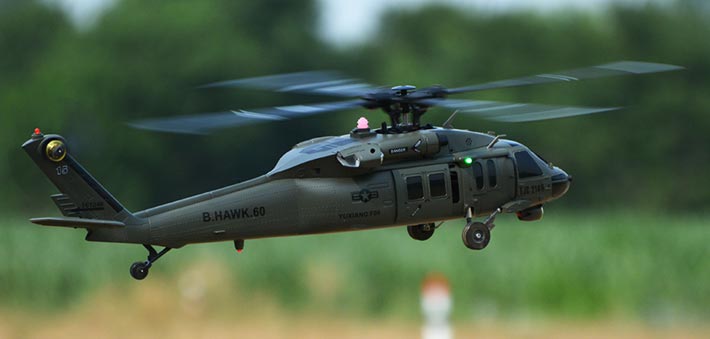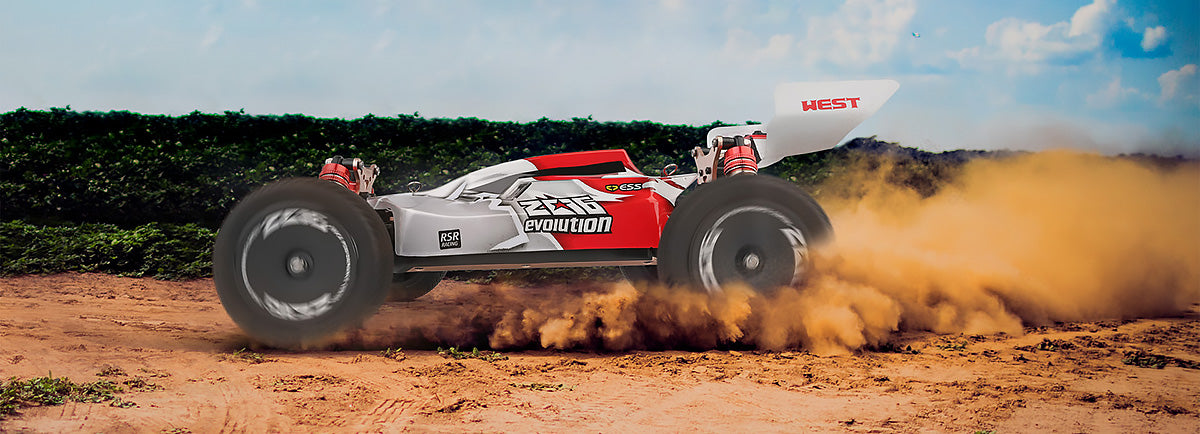As an FPV drone player, I wanted to buy a helicopter for fun on a whim. Based on the principle of buying new rather than old, I bought a GOOSKY Legend S1.

GOOSKY Legend S1 first thing I felt when I got it was that it was very delicate. Compared with FPV drones, it was very precise, especially the helicopter swash plate, which had a kind of mechanical beauty.


Since I had very little knowledge about helicopters before, I had many questions after getting the GOOSKY Legend S1. I checked some information online. Here is a brief summary of what I know about helicopters for the convenience of other players who have the same questions.
1. The difference between four-channel helicopters and six-channel helicopters
*Four-channel refers to the 4 channels of the remote control, which control roll, pitch, throttle, and yaw respectively. The propeller pitch of the aircraft is fixed, and the altitude is controlled by the throttle level (propeller speed). Generally, it can only fly along the route.
*The six-channel is based on the four-channel, adding a tail gyro and changing the propeller to a variable-pitch propeller. The two additional channels are the 5th channel gyro sensitivity channel and the 6th channel pitch channel. Since the size and positive and negative of the pitch can be controlled, the six-channel helicopter can fly upside down and perform a variety of aerobatics.
2. Does the helicopter have flight control?
* Let’s talk about the structure of the helicopter first. Today’s helicopters all use CCPM swash plates. Every movement of the swash plate is completed by three servos at the same time. For example, when the blade pitch changes, three servos simultaneously push and pull the swash plate to move up and down. The movement of the aileron is completed by pushing and pulling the aileron and pitch servos at the same time, and the lifting movement is completed by pushing and pulling the elevator servos, ailerons and pitch servos simultaneously.
*Generally, the tail rotor of larger aircraft is connected to the main rotor through the transmission shaft and operates synchronously. The pitch of the tail rotor is variable, and the tail rotor pitch is controlled by a servo. The mechanical structure of smaller aircraft cannot be that complicated. Generally, the tail rotor is driven by a separate motor with a fixed pitch. The tail rotor thrust is controlled by changing the motor speed.
*Traditional remote control helicopters do not have flight controls. The receiver directly controls the servos and motors. The CCPM swashplate servo is implemented through the mixing function on the remote control. The tail rudder stabilizes the yaw direction through a gyroscope, also known as Tail-locking gyroscope (this gyroscope can also be realized mechanically. I remember seeing an expert making a hand-made mechanical gyroscope for a helicopter on the 5imx forum).
*Nowadays, small remote control helicopters are generally equipped with a flight control, but this flight control is very different from the flight control of a traversing aircraft. For example, there is no unlocking channel, and the adjustable parameters are much less than that of a traversing aircraft, such as this GOOSKY Legend S1. The flight control can control the attitude of the helicopter, lock the tail, and fly stably, which greatly reduces the difficulty of getting started with the helicopter.
3. Use ELRS receiver to control GOOSKY Legend S1
*The flight control of GOOSKY Legend S1 supports SBUS input. It happens that some time ago ELRS3.3 started to support SBUS output, so you can make full use of the traversing machine equipment at hand to play with helicopters.
*GOOSKY Legend S1 After flashing the firmware of the ELRS receiver, change the output of the receiver to SBUS in the receiver wifi web configuration interface or the lua script of the remote control, then solder a 3p PH1.25 plug and plug it in directly, and the flight control SBUS will be automatically recognized (unlike the traversing machine, which needs to be set in the ground station software).

Channel settings (here I use the T20 as an example)


Mixing settings
*CH1-4 are conventional AETR channels, among which channel 2 and channel 3 need to be set in reverse direction.
*CH5 is a self-stabilizing switch. According to the custom of the traversing machine, just set a three-speed switch.
*CH6 is pitch control. Use the throttle stick on the remote control and need to set the reverse direction.

Output settings
Finally, add a switch to lock the throttle and serve as an unlock switch.

GOOSKY Legend S1 After this setting, if there is a basis for visual hovering of the flying aircraft, the aircraft can basically fly.
After the aircraft is powered on and automatically recognizes the receiver signal, you can see the servo move by moving the joystick, then unlock the throttle, slowly move the throttle, and you can see that the main rotor and tail rotor are rotating (the pitch is 0 The sound is very soft, the kind of quiet you can't experience on an FPV drone), increase the main rotor speed to about 40%, and then try to push the throttle stick to increase the pitch. At this time, the aircraft should be able to fly successfully.
During the first test flight, there are two things that need to be noted. The first is that the fuselage of the aircraft tilts to one side when taking off, and the same applies when hovering. The tilt is visible to the naked eye. This is a normal phenomenon, because The aircraft needs to tilt a little to offset the thrust of the tail rotor to one side. The second one is that GOOSKY Legend S1 only has 2 modes, manual and self-stabilized, corresponding to the ACRO mode and ANGLE mode of the FPV drone. The gyroscope does not work after powering on. Once the main rotor rotates, the gyroscope starts. Intervention, the attitude will be maintained in manual mode, the level will be maintained in auto-stabilizing mode, and it will continue after stopping the propellers. At this time, when the aircraft is shaken, you can clearly see that the servo is following the action and trying to maintain the attitude.
I haven’t had time to explore other settings yet, I’ll add them when I have time.















